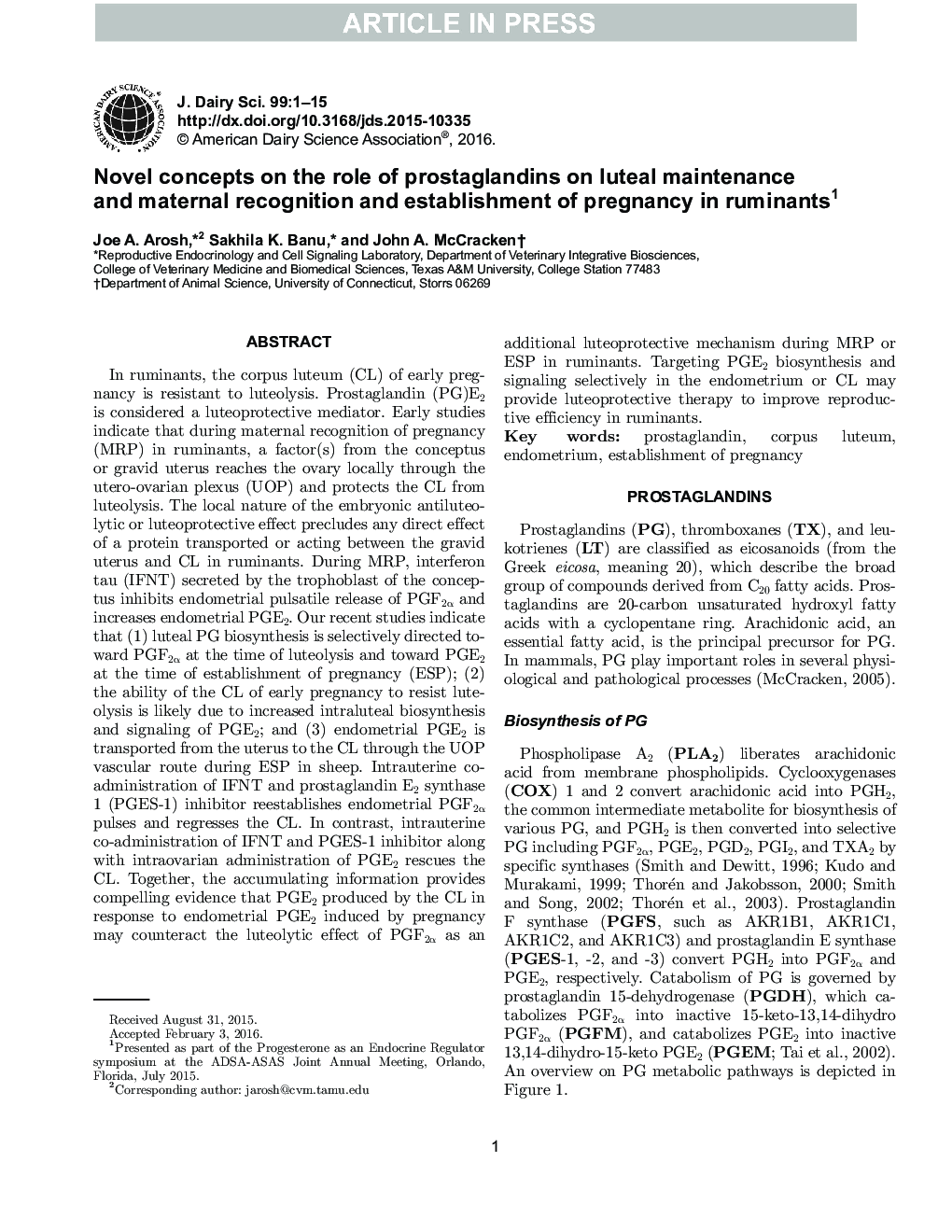| کد مقاله | کد نشریه | سال انتشار | مقاله انگلیسی | نسخه تمام متن |
|---|---|---|---|---|
| 10973688 | 1108017 | 2016 | 15 صفحه PDF | دانلود رایگان |
عنوان انگلیسی مقاله ISI
Novel concepts on the role of prostaglandins on luteal maintenance and maternal recognition and establishment of pregnancy in ruminants1
ترجمه فارسی عنوان
مفاهیم رمان در مورد نقش پروستاگلاندین ها در حفظ و نگهداری لوتئال و تشخیص مادر و ایجاد حاملگی در روزهای یادگیری
دانلود مقاله + سفارش ترجمه
دانلود مقاله ISI انگلیسی
رایگان برای ایرانیان
کلمات کلیدی
پروستاگلاندین، لوپوس کبد، آندومتر، ایجاد بارداری،
موضوعات مرتبط
علوم زیستی و بیوفناوری
علوم کشاورزی و بیولوژیک
علوم دامی و جانورشناسی
چکیده انگلیسی
In ruminants, the corpus luteum (CL) of early pregnancy is resistant to luteolysis. Prostaglandin (PG)E2 is considered a luteoprotective mediator. Early studies indicate that during maternal recognition of pregnancy (MRP) in ruminants, a factor(s) from the conceptus or gravid uterus reaches the ovary locally through the utero-ovarian plexus (UOP) and protects the CL from luteolysis. The local nature of the embryonic antiluteolytic or luteoprotective effect precludes any direct effect of a protein transported or acting between the gravid uterus and CL in ruminants. During MRP, interferon tau (IFNT) secreted by the trophoblast of the conceptus inhibits endometrial pulsatile release of PGF2α and increases endometrial PGE2. Our recent studies indicate that (1) luteal PG biosynthesis is selectively directed toward PGF2α at the time of luteolysis and toward PGE2 at the time of establishment of pregnancy (ESP); (2) the ability of the CL of early pregnancy to resist luteolysis is likely due to increased intraluteal biosynthesis and signaling of PGE2; and (3) endometrial PGE2 is transported from the uterus to the CL through the UOP vascular route during ESP in sheep. Intrauterine co-administration of IFNT and prostaglandin E2 synthase 1 (PGES-1) inhibitor reestablishes endometrial PGF2α pulses and regresses the CL. In contrast, intrauterine co-administration of IFNT and PGES-1 inhibitor along with intraovarian administration of PGE2 rescues the CL. Together, the accumulating information provides compelling evidence that PGE2 produced by the CL in response to endometrial PGE2 induced by pregnancy may counteract the luteolytic effect of PGF2α as an additional luteoprotective mechanism during MRP or ESP in ruminants. Targeting PGE2 biosynthesis and signaling selectively in the endometrium or CL may provide luteoprotective therapy to improve reproductive efficiency in ruminants.
ناشر
Database: Elsevier - ScienceDirect (ساینس دایرکت)
Journal: Journal of Dairy Science - Volume 99, Issue 7, July 2016, Pages 5926-5940
Journal: Journal of Dairy Science - Volume 99, Issue 7, July 2016, Pages 5926-5940
نویسندگان
Joe A. Arosh, Sakhila K. Banu, John A. McCracken,
